20. Keller: John Paul Keller is a contract killer who first appeared in Lawrence Block’s short story 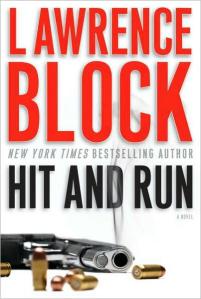 “Soldier, ” returning in four books: Hit Man (William Morrow, 1998), Hit List (William Morrow, 2000), Hit Parade (William Morrow, 2006) and Hit and Run (William Morrow, 2008). Keller kills for money without remorse, but he is not without his quirks. At nearly every job to which he travels, he seriously considers taking on a new life in the community, including considering training for a new vocation and taking up the hobby of stamp collecting. The hobby sticks with Keller and it’s one of the things that makes him such a standout villain, even if the reader is rooting for him throughout the course of the books.
“Soldier, ” returning in four books: Hit Man (William Morrow, 1998), Hit List (William Morrow, 2000), Hit Parade (William Morrow, 2006) and Hit and Run (William Morrow, 2008). Keller kills for money without remorse, but he is not without his quirks. At nearly every job to which he travels, he seriously considers taking on a new life in the community, including considering training for a new vocation and taking up the hobby of stamp collecting. The hobby sticks with Keller and it’s one of the things that makes him such a standout villain, even if the reader is rooting for him throughout the course of the books.
Alone, Keller reviewed his options.
He could kill Lyman Crowder. He’d be keeping it simple, carrying out the mission as it had been given to him. And it would solve everybody’s problems. June and Hobie could get the divorce they both so desperately wanted.
On the downside, they’d both be losing the man each regarded as the greatest thing since microwave popcorn.
19. Big Brother: Both disembodied and all encompassing at the same time, Big Brother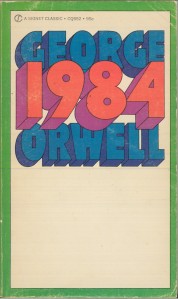 is the dystopian government in George Orwell’s futuristic novel, 1984 (Secker and Warburg, 1949), often viewed as a precautionary tale about societal leadership. Big Brother sanitizes the news, censors literature and instills such fear in its citizens, that they turn one another in for the smallest crimes against society (such as thoughtcrimes), in order to avoid being cast in a suspicious light and thus receive punishment from Big Brother.
is the dystopian government in George Orwell’s futuristic novel, 1984 (Secker and Warburg, 1949), often viewed as a precautionary tale about societal leadership. Big Brother sanitizes the news, censors literature and instills such fear in its citizens, that they turn one another in for the smallest crimes against society (such as thoughtcrimes), in order to avoid being cast in a suspicious light and thus receive punishment from Big Brother.
And if all others accepted the lie which the Party imposed—if all records told the same tale—then the lie passed into history and became truth. ‘Who controls the past’ ran the Party slogan, ‘controls the future: who controls the present controls the past.’
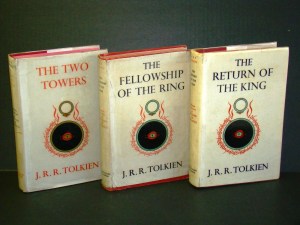 18. Lord Sauron: So bad to his core that even the loss of his body couldn’t keep him down, Sauron raised an army of orcs, Wargs, Nazgul, fell beasts and a variety of other deadly creatures to destroy his enemies and conquer the lands of Middle Earth in J.R.R. Tokien’s Middle Earth books. Originally a mage of great power, Sauron was corrupted by an evil mage known as The Great Enemy. For a time Sauron spied for The Great Enemy as he came to grips with his newly accepted alignment. Then he raised his armies and created The One Ring, to dominate the Rings of Power created by the Elves. After a war with the Elves, the ring was lost to Sauron for centuries. If not for Frodo Baggins and the Fellowship of the Ring, Sauron might have succeed in further attempts at conquest.
18. Lord Sauron: So bad to his core that even the loss of his body couldn’t keep him down, Sauron raised an army of orcs, Wargs, Nazgul, fell beasts and a variety of other deadly creatures to destroy his enemies and conquer the lands of Middle Earth in J.R.R. Tokien’s Middle Earth books. Originally a mage of great power, Sauron was corrupted by an evil mage known as The Great Enemy. For a time Sauron spied for The Great Enemy as he came to grips with his newly accepted alignment. Then he raised his armies and created The One Ring, to dominate the Rings of Power created by the Elves. After a war with the Elves, the ring was lost to Sauron for centuries. If not for Frodo Baggins and the Fellowship of the Ring, Sauron might have succeed in further attempts at conquest.
But Sauron was not of mortal flesh, and though he was robbed now of that shape in which had wrought so great an evil, so that he could never again appear fair to the eyes of Men, yet his spirit arose out of the deep and passed as a shadow and a black wind over the sea, and came back to Middle-earth and to Mordor that was his home. There he took up again his great Ring in Barad-dur, and dwelt there, dark and silent, until he wrought himself a new guise, an image of malice and hatred made visible; and the Eye of Sauron the Terrible few could endure.
17. AM: Possibly the most sadistic supercomputer in literature, the Allied 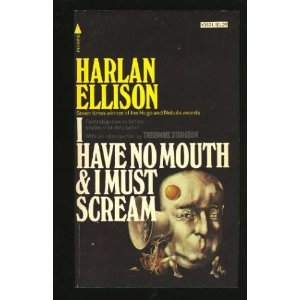 Mastercomputer becomes self aware and takes control of a World War, using its resources to commit global genocide on all but five humans. This is the backstory of Harlan Ellison’s short story “I Have No Mouth, But I Must Scream,” which first appeared in the March issue of IF: Worlds of Science Fiction magazine in 1967. The story follows the lives of the five survivors, whom AM keeps alive (it has found a way to extend their lives almost indefinitely) to relentlessly torture, through near starvation, headgames, sonic terrorism and targeted attacks from various creatures. AM blames humanity for creating it in a constant state of suffering and it vents its frustration upon this small band of humans.
Mastercomputer becomes self aware and takes control of a World War, using its resources to commit global genocide on all but five humans. This is the backstory of Harlan Ellison’s short story “I Have No Mouth, But I Must Scream,” which first appeared in the March issue of IF: Worlds of Science Fiction magazine in 1967. The story follows the lives of the five survivors, whom AM keeps alive (it has found a way to extend their lives almost indefinitely) to relentlessly torture, through near starvation, headgames, sonic terrorism and targeted attacks from various creatures. AM blames humanity for creating it in a constant state of suffering and it vents its frustration upon this small band of humans.
Hate. Let me tell you how much I’ve come to hate you since I began to live. There are 387.44 million miles of printed circuits in wafer thin layers that fill my complex. If the word ‘hate’ was engraved on each nanoangstrom of those hundreds of miles it would not equal one one-billionth of the hate I feel for humans at this micro-instant for you. Hate. Hate.
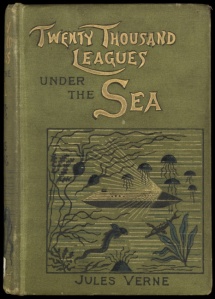 16. Captain Nemo: Like Am, Nemo is full of hate for all of humanity above the sea – except those who are oprressed, with whom he seems to share a certain affinity due to unrevealed past events in his life that resulted in the death of his family. We meet Nemo for the first time in the pages of 20,000 Leagues Under the Sea (Pierre-Jules Hetzel, 1870) by Jules Verne. One of the things that makes him such a well written villain is his complexity. The personal reasons for his hatred, provide him with interesting motivation and his incredible discipline and focus matched with his intellect make him formidable (as does his awesome submarine, the Nautilus).
16. Captain Nemo: Like Am, Nemo is full of hate for all of humanity above the sea – except those who are oprressed, with whom he seems to share a certain affinity due to unrevealed past events in his life that resulted in the death of his family. We meet Nemo for the first time in the pages of 20,000 Leagues Under the Sea (Pierre-Jules Hetzel, 1870) by Jules Verne. One of the things that makes him such a well written villain is his complexity. The personal reasons for his hatred, provide him with interesting motivation and his incredible discipline and focus matched with his intellect make him formidable (as does his awesome submarine, the Nautilus).
The sea is everything. It covers seven tenths of the terrestrial globe. Its breath is pure and healthy. It is an immense desert, where man is never lonely, for he feels life stirring on all sides. The sea is only the embodiment of a supernatural and wonderful existence. It is nothing but love and emotion; it is the Living Infinite.

